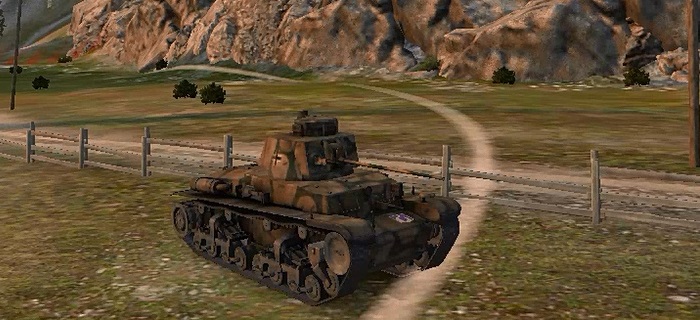German light tank Pz 2 Ausf. D. In the second half of 1934, the 6th Department of the Armaments Department developed tactical technical requirements for a new combat vehicle – a 10-ton tank armed with a 20 mm cannon.
In 1938, the firm Daimler Benz developed a project of the so-called “fast tank” (Schnellkampfwagen), designed for tank battalions of light divisions. In appearance, this machine was very different from the other modifications of the “two”. Ausf.C borrowed only a tower with weapons, the chassis and hull were constructed anew.
In the running part of the Christie type, four large-diameter support rollers were used on board, new driving and steering wheels. The hull was almost the same as the tank Pz.III. Combat weight of the machine was 10 tons. The engine Maybach HL 62TRM allowed the tank to develop a maximum speed on the highway 55 km / h. Transmission Maybach Variorex VG 102128H had seven speeds forward and three – back. Pz.II Ausf.E differed from Ausf.D with a reinforced suspension, a new caterpillar and a modified lazer design.
In 1938-1939, Daimler Benz and MAN produced 143 tanks of both versions and about 150 chassis.
The layout of the tank was a classic German scheme with a front-mounted transmission.
The tank hull was welded from rolled sheets of chromium-nickel steel. The hatch in the roof of the hull was not for the driver’s mechanic, and for this purpose he used a single-hatch hatch in the upper frontal sheet of the hull. In the control department there were a canvas driver’s seat, tank controls and control devices. In the case there were four observation devices with glass blocks of triplex, which were closed from the outside by armored covers with observation slots.
TOWER – welded, hexagonal – was displaced relative to the longitudinal axis of the tank to the left by 85 mm. In its roof was a double-hatch, replaced in the process of modernization by the commander’s turret. In the right hatch of the hatch, a small rectangular hatch was used for flags. Rotation of the tower was carried out manually with the help of the rotation mechanism.
The military baptism of Pz.II was taken in March 1938, during the operation to annex Austria to the Reich, the so-called Anschluss. Combat collisions during this operation were not, but during the march to Vienna up to 30% of the “twos” failed for technical reasons, mainly because of the low reliability of the running gear. The accession of Czechoslovakia to Germany by the Sudetenland in October 1938 was also bloodless, as a result of the Munich collusion. Losses in the material part were already considerably less, since trucks were used to transport Pz.II to the places of concentration.
The Sudeten region was followed by the occupation of the Czech Republic and Moravia. March 15, 1939, the first to enter Prague Pz.II from the 2nd Panzer Division of the Wehrmacht.
On the eve of the Polish campaign Pz.II, along with Pz.I, constituted the majority of Panzerwaffe fighting vehicles. On September 1, 1939, the German troops had 1223 tanks of this type.
The armor of the “deuces” effortlessly penetrated the shells of 37 mm anti-tank cannons wz.36 and 75 mm field guns of the Polish army, which was already revealed on September 1-2 when the position of the Volyn cavalry brigade under the Mokroy broke through. The 1st Panzer Division lost eight Pz.II cars there. Even greater losses – 15 tanks Pz.II – incurred the 4th Panzer Division on the outskirts of Warsaw. In total, during the Polish campaign until October 10, the Wehrmacht lost 259 tanks of this type. However, irrecoverable losses amounted to only 83 cars.
To participate in the seizure of Denmark and Norway, the 40th Battalion of Special Purpose (Panzer Abteilung zb V 40) was formed, consisting of three companies, each of which, in contrast to the staff organization Panzerwaffe, consisted of only three platoons. The battalion was armed with light tanks Pz.I and Pz.II. The invasion of Denmark began on April 9, 1940. Danish troops practically did not resist, and the fighting ended before noon.
Pz.II could easily fight the Soviet light tanks T 37, T 38 and T 40, armed with machine guns, as well as armored cars of all types. Light tanks, T 26 and BT, especially the latest issues, were struck with “deuces” only from relatively close distances. At the same time, German machines inevitably had to enter the zone of effective fire of Soviet 45 mm tank guns. Confidently pierced armor Pz.II and Soviet anti-tank guns.
[utubevideo id=”12″]








